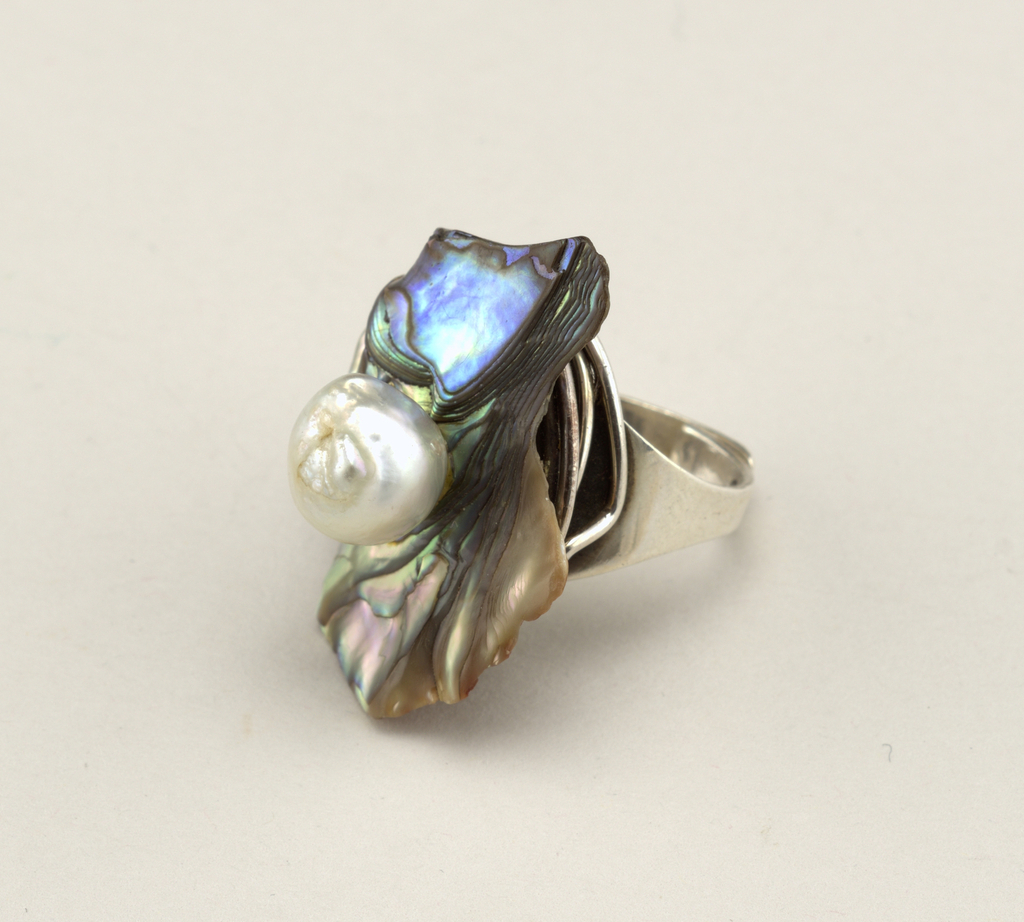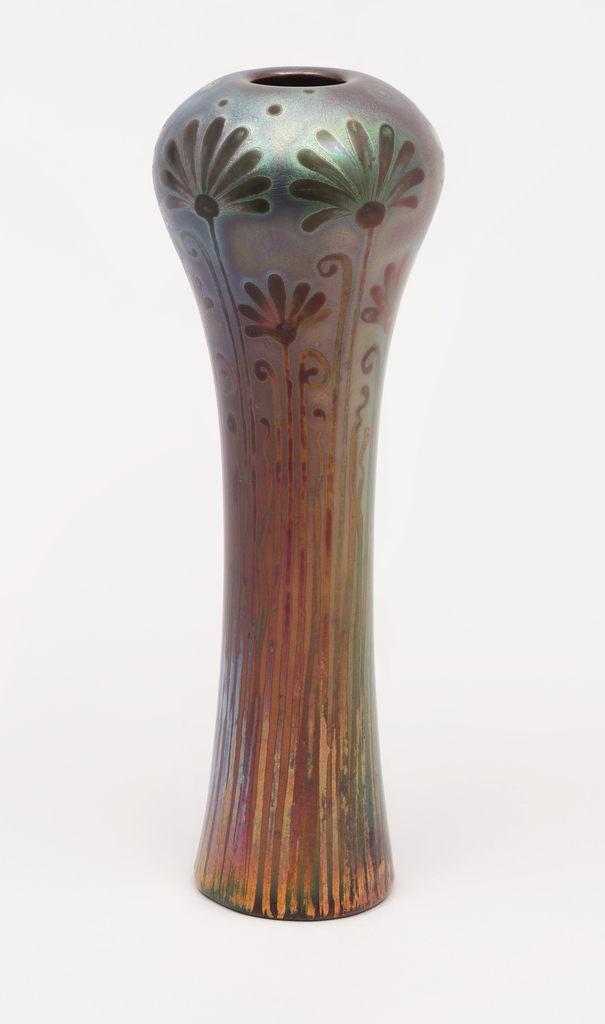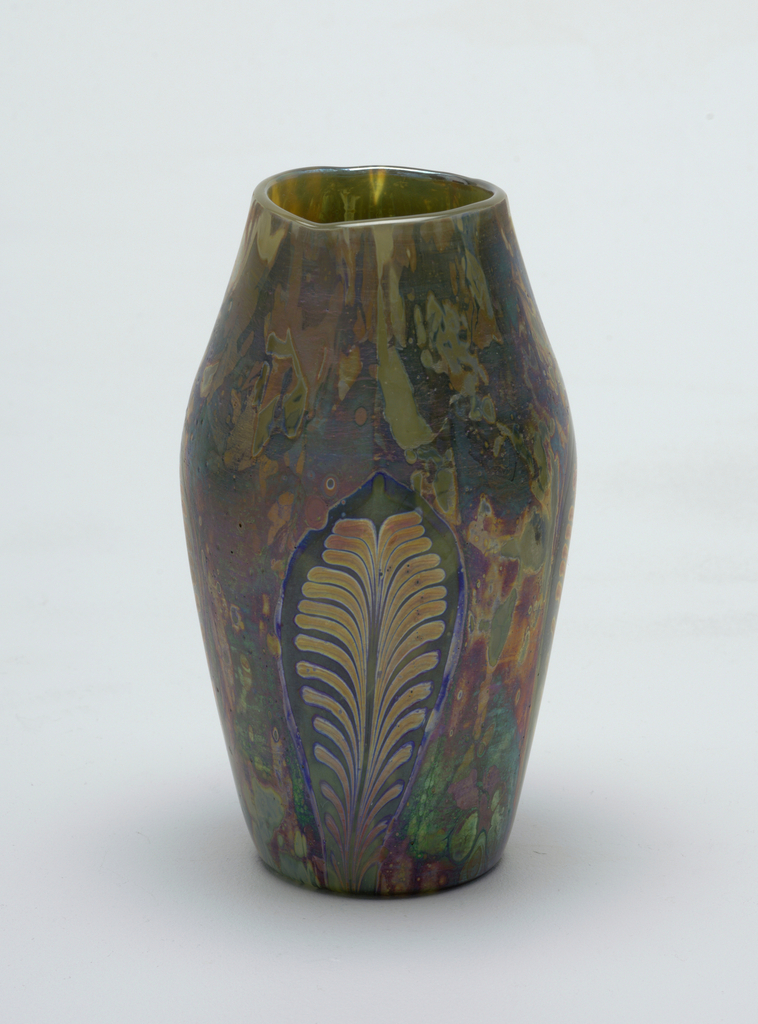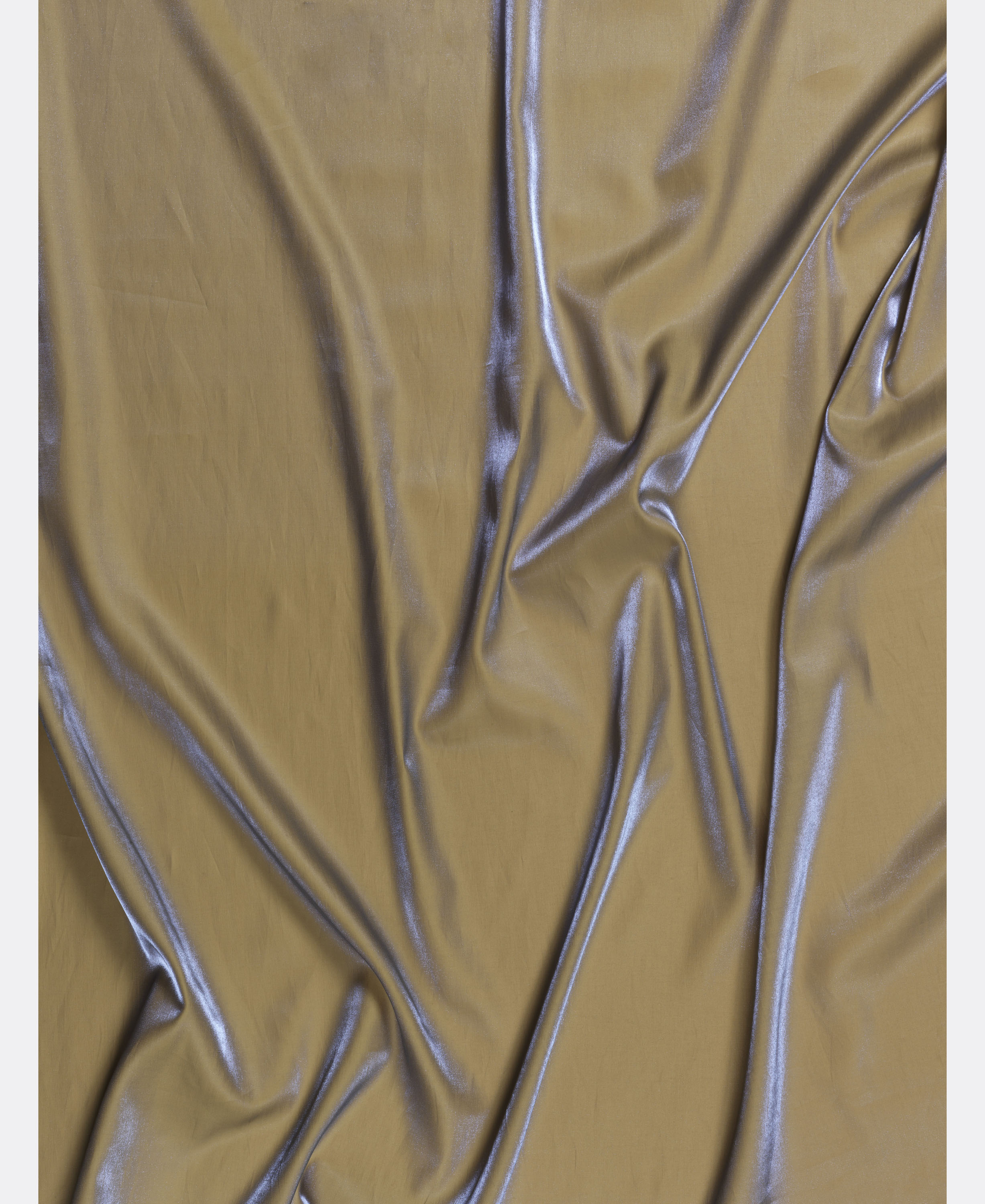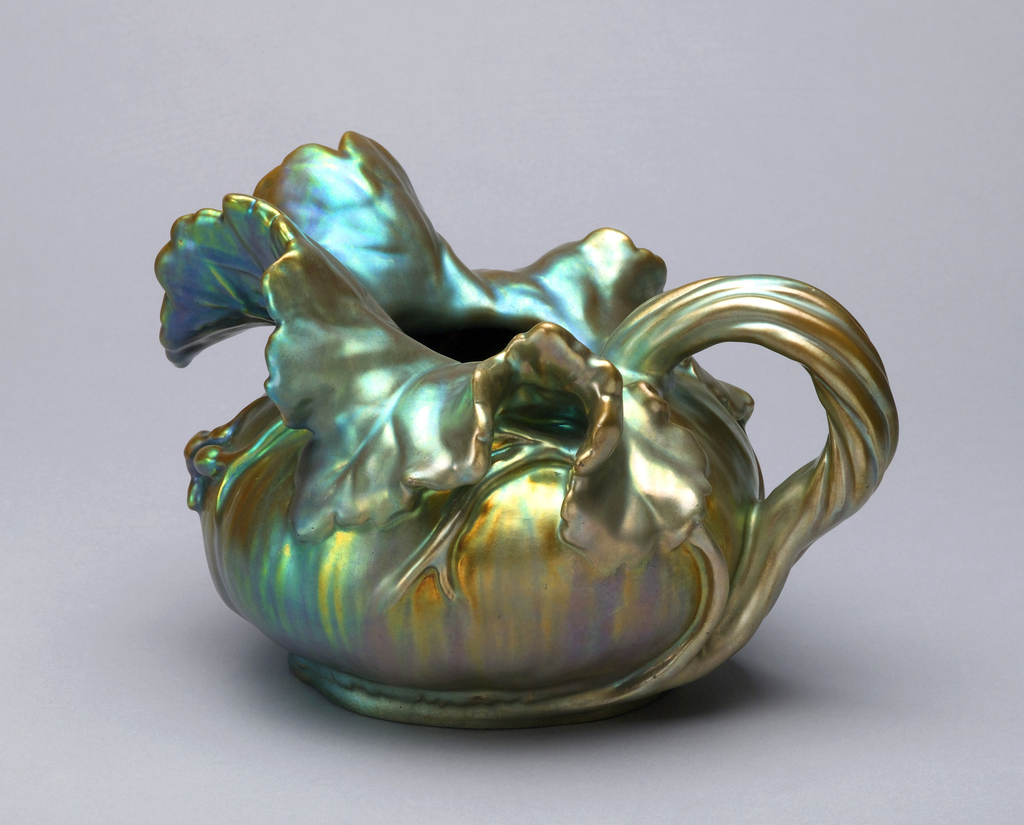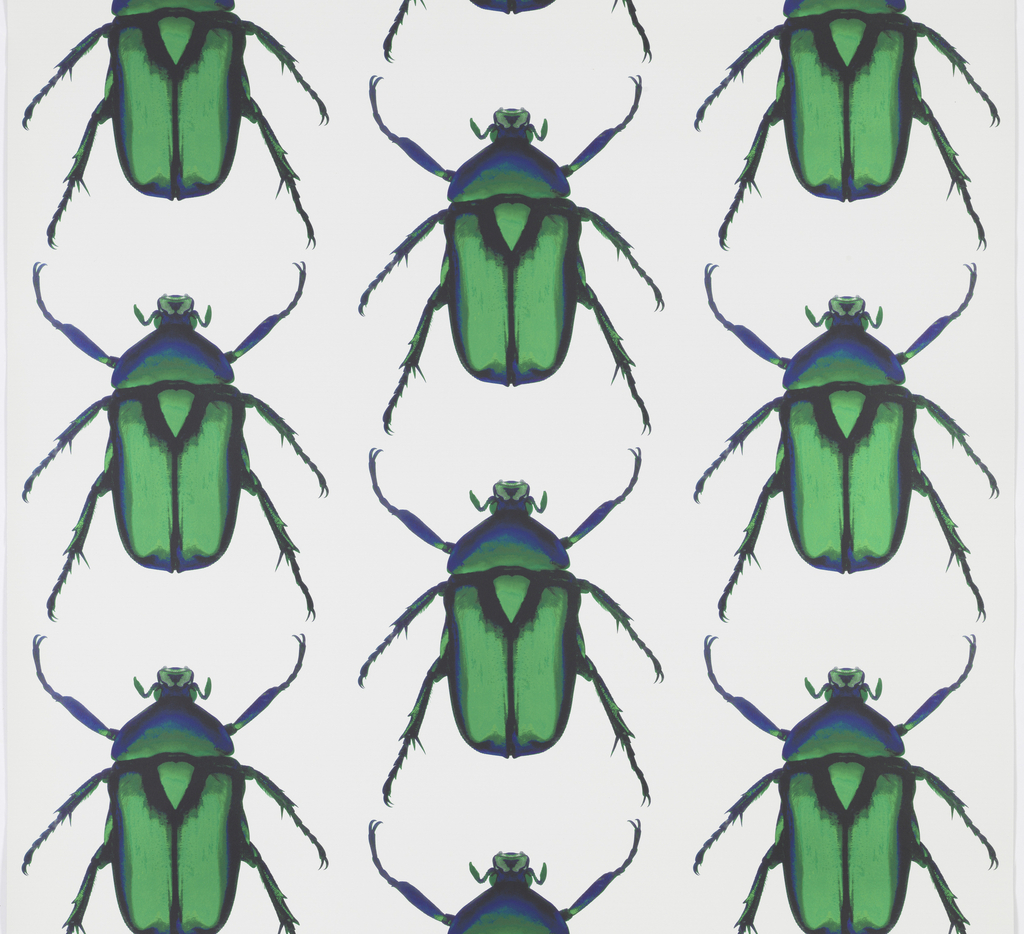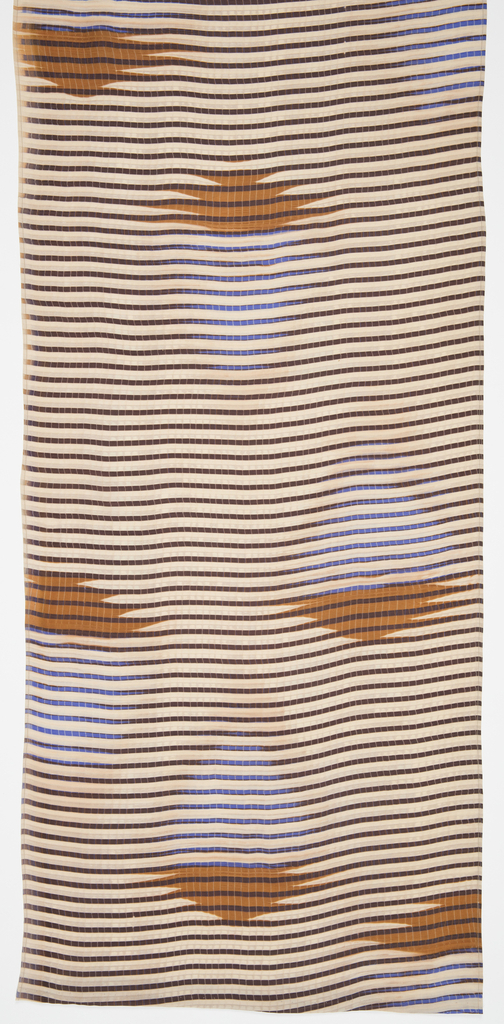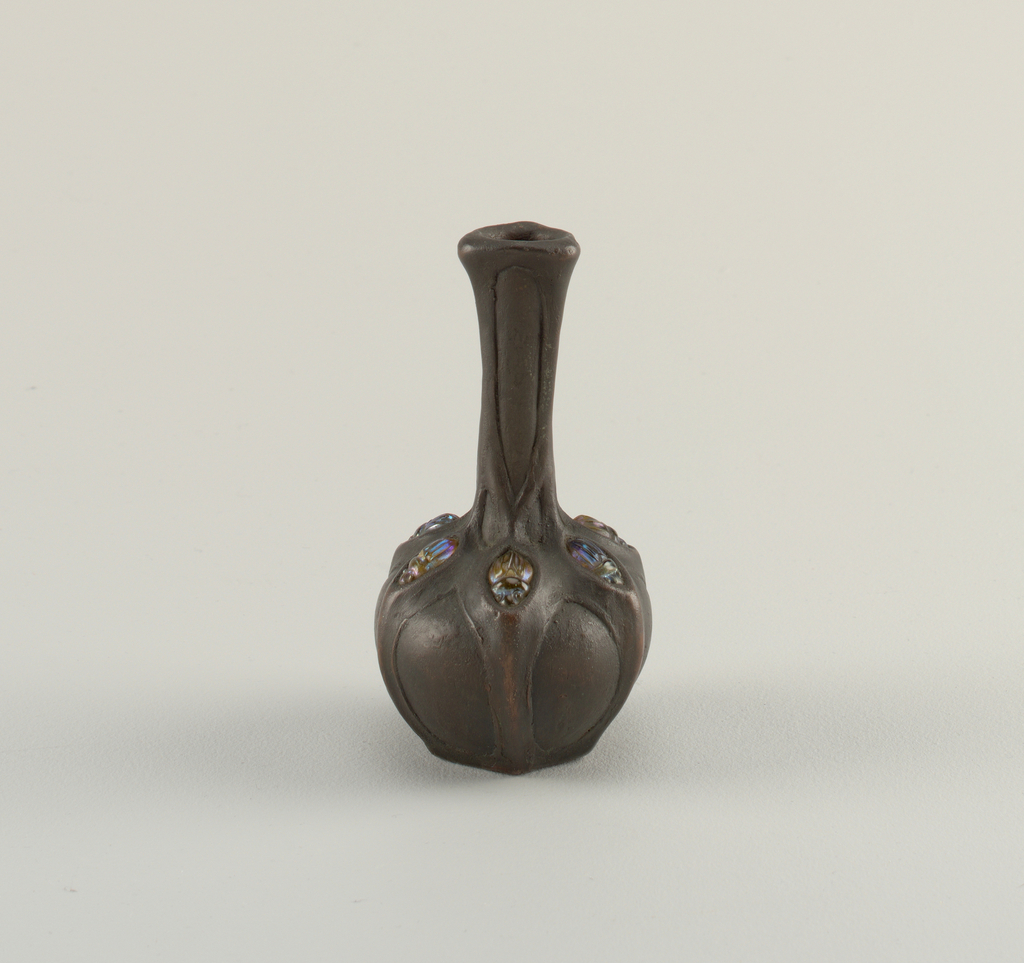The colors of the rainbow are captured in this ring by Francisco Rebajes, highlighting the luminescence that naturally occurs in abalone shell and pearls. This adornment for the hand is composed of an adjustable silver band featuring a lustrous mass of shell from the abalone, a type of sea snail, combined with a baroque pearl...
Have you ever noticed shimmering rainbows floating along puddles in the road? This bright iridescence is created by oil floating on the water, and is caused by the way light interacts with itself as it travels through the oil film to the water below. We often refer to this phenomenon as interference colors (good explanation...
To celebrate the opening of Iridescence, on view through March 24, 2019, Object of the Day this week will feature iridescent objects in the collection. This vase with its shimmering colors and fluid lines was designed by Jacques Sicard for the Weller Pottery between 1902 and 1907. It was created using gray-white clay and is...
From the archives, an Object of the Day post on an example of iridescent design from the collection.
From the archives, an Object of the Day post on an example of iridescent design from the collection.
To celebrate the opening of Iridescence, on view through March 24, 2019, Object of the Day this week will feature iridescent objects in the collection. This turn-of-the-twentieth-century leaf-form pitcher utilizes the innovative eosin reduction glazing technique developed and trademarked by the Hungarian porcelain firm Zsolnay only a few years earlier. Lusterware, which had been revived...
To celebrate the opening of Saturated: The Allure and Science of Color (May 11, 2018-January 13, 2019), Object of the Day this month will feature colorful objects from the exhibition. This blog originally posted in September 2016. When I first saw this wallpaper I had to stop and do a double-take. It is very unusual for an...
Author: Pat Hickman September is New York Textile Month! In celebration, members of the Textile Society of America will author Object of the Day for the month. A non-profit professional organization of scholars, educators, and artists in the field of textiles, TSA provides an international forum for the exchange and dissemination of information about textiles...
The Egyptian motif of the scarab, a symbol of self-renewal, experienced great popularity in the late nineteenth and early twentieth centuries. Thousands of glass scarabs were produced by at Tiffany’s Corona factory and inset into jewelry, metalwork, and ceramic vases, as seen here. Tiffany’s Favrile pottery is known for its unique color effects, created by...
